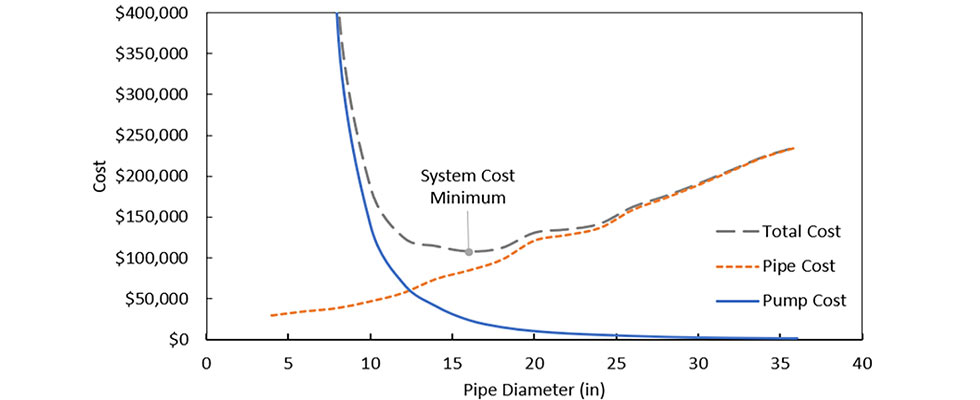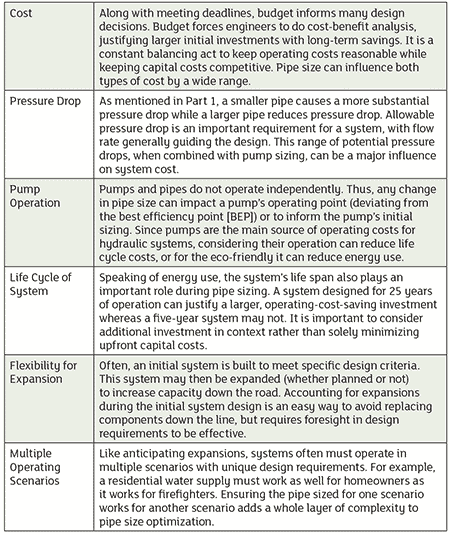
Part 1 of this article (featured in the November 2020 issue of Pumps & Systems) focused on the pros and cons of spreadsheets versus modeling software.
Additional Pipe Sizing Considerations
With hydraulic solvers a dime a dozen, design work has shifted focus to analysis and design alternatives. Through improved tools, increasingly complex models make pipe size optimization more difficult.
What makes pipe size optimization so challenging? See the chart below to break down the different considerations that go into comparing additional pipe size alternatives.

The Future of Pipe Sizing
It is evident that manually comparing every possible pipe size combination for these considerations would be hopeless, and yet, there is still hope. Technically, not every combination needs be checked. Since there is an objective way to compare the results of design alternatives (such as minimizing life cycle cost and ensuring design requirements are met), a solver can meander its way toward an optimal pipe size by looking at solution gradients. For example, if a comparison between a 3-inch and 2-inch pipe indicated the 3-inch has a lower life cycle cost, the solver can avoid analyzing sub-2-inch pipes, thus, reducing the necessary number of comparisons the solver has to make.
Of course, this type of solver would require some extra work by an engineer to inform the design requirements, limits, goals and pipe candidates for the solver. However, when compared to the manual comparison of even just a handful of options, the benefit of this extra work is immeasurable. This removes many of the barriers that have limited pipe size optimization for so long. Since modern computers can perform billions of instructions per second, engineers can again step out of the way of the calculations and comparisons to commit more time to analysis.
With any luck, this kind of solver can automatically size piping networks, taking advantage of computer processing in the same way modeling software made hand calculations antiquated all those years ago. No longer will deadline-driven compromise limit a hydraulic design’s potential.

